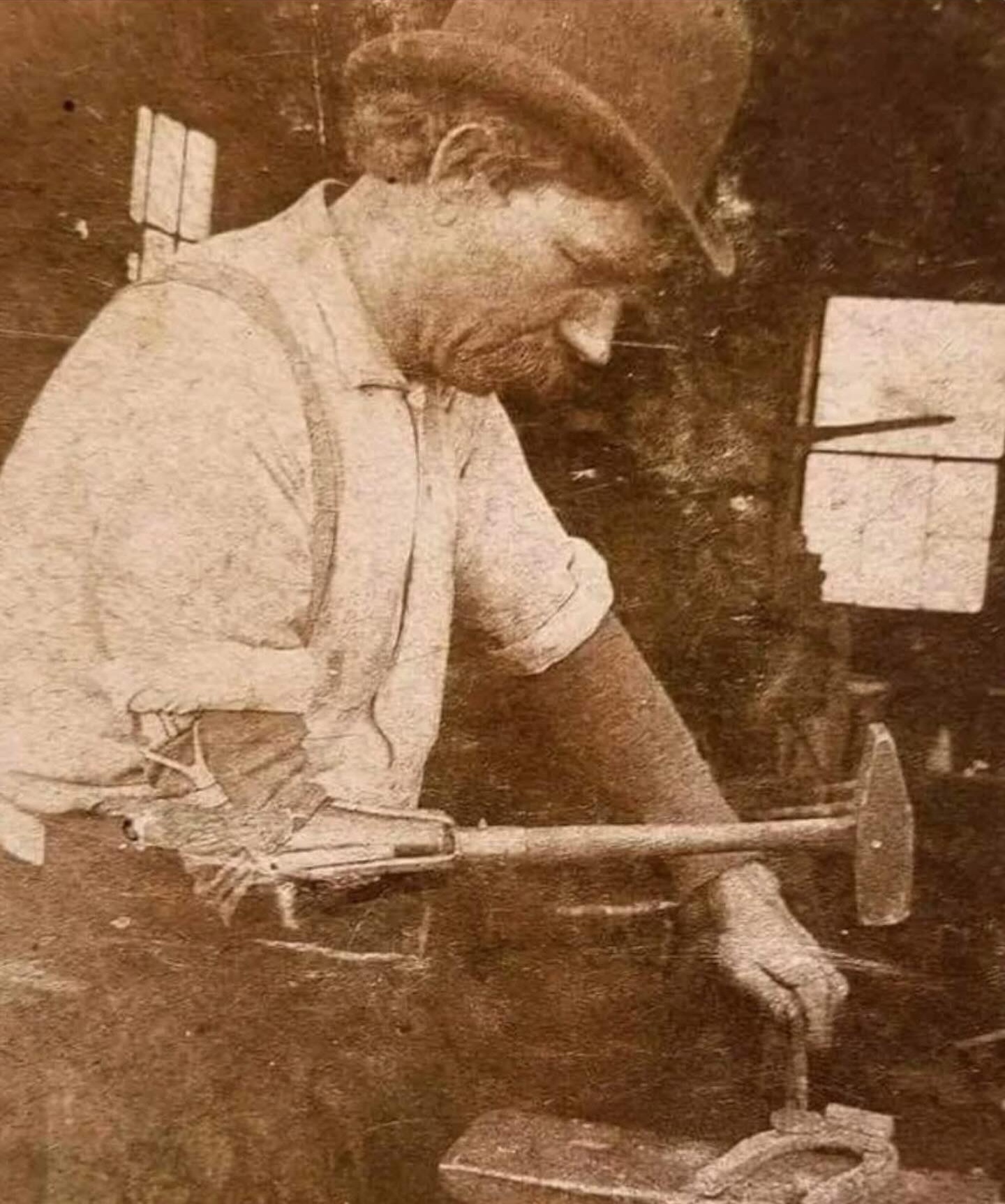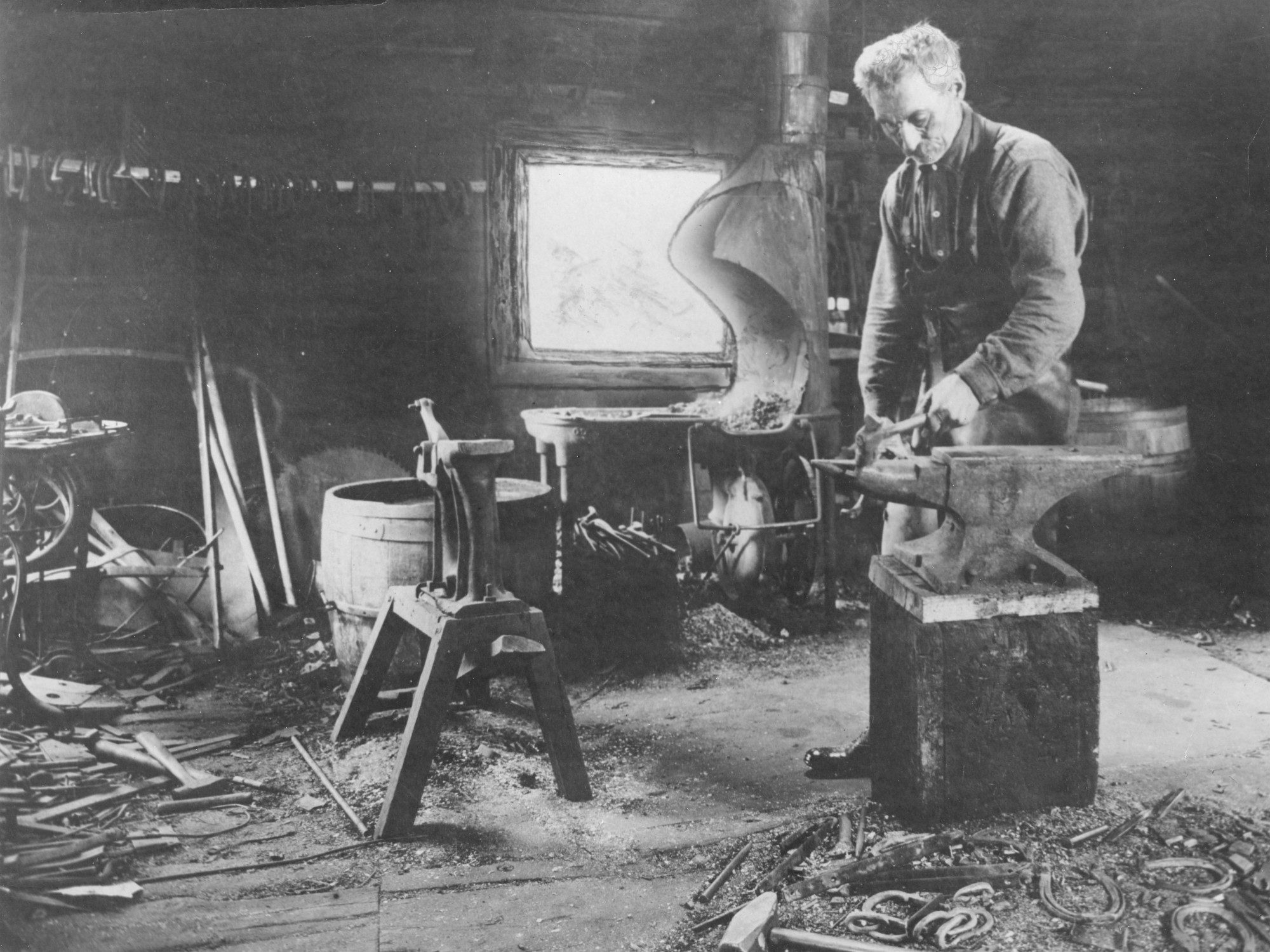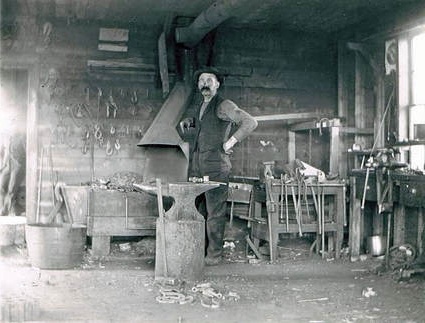Hammer for a Hand: How One Blacksmith Redefined Resilience in the 1800s
The man captured in this striking photograph was no ordinary blacksmith. After losing part of his arm, he faced a decision that would define the rest of his life: leave behind the craft he loved, or find a way to continue. His solution was nothing short of remarkable. Instead of stepping away from his trade, he forged his own path—literally—by attaching a hammer directly to his stump.

In the late 19th century, industries such as blacksmithing, railroads, and mining were central to everyday life, but they came with constant risks. Workplace safety regulations were minimal, and protective equipment was far from what we know today. For many workers, the ability to adapt determined not just how they earned a living, but how they survived.
Modern prosthetics were only in their early stages, often bulky and limited in function. For men and women whose livelihoods demanded strength and precision, waiting for innovation was not an option. Creativity became a necessity, and workers frequently invented their own solutions. In this case, the blacksmith’s ingenuity allowed him to transform a physical challenge into a functional tool—an early example of what could be called a “working prosthetic.”

His hammer-arm was more than just a practical device. It was a statement of resilience and determination. Blacksmithing required intense focus, heat tolerance, and exact movements. By reimagining his own body as part of his toolkit, the blacksmith not only preserved his livelihood but also embodied the grit and perseverance of the industrial era.
Photographs like this one shed light on a mindset that defined the age: to work was to endure, and to endure often meant to innovate. In communities where every hand counted, inventiveness bridged the gap between limitation and possibility.

Today, his story stands as a reminder of human adaptability. While technology and prosthetics have advanced far beyond what was available in the 1800s, the spirit of his solution continues to inspire. His hammer-arm is not just a tool from history—it’s a symbol of perseverance, ingenuity, and the drive to keep creating against the odds.







